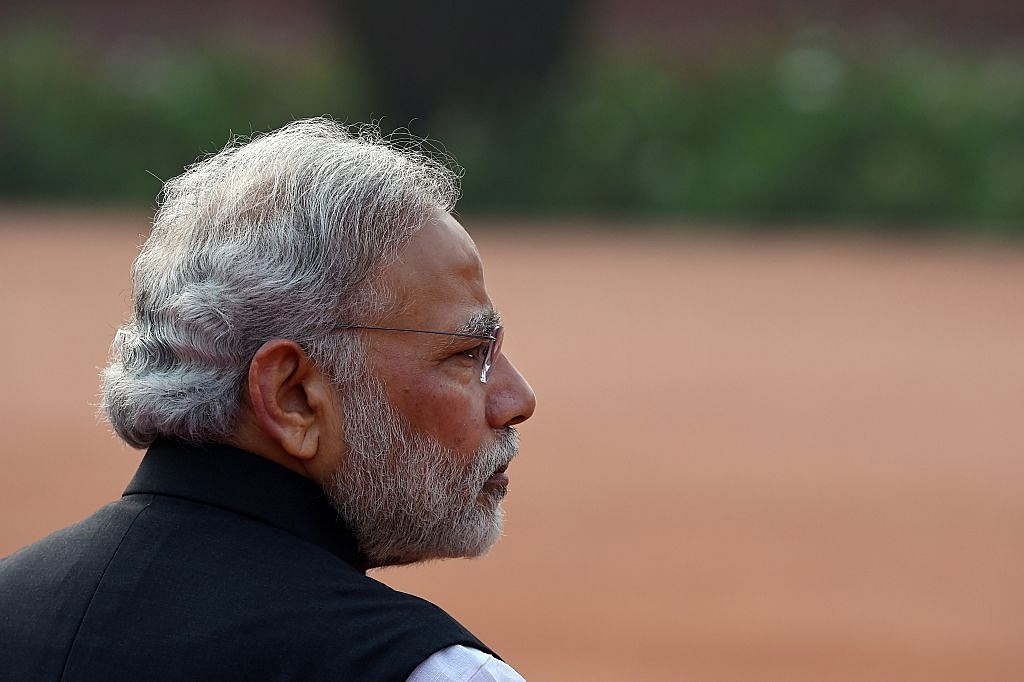Politics
Modi Govt’s Political Management Of Subsidy Reform Is Very Well Calibrated
- Though aided by benign oil prices, Modi government’s political management of subsidy reforms has been very good

Prime Minister Narendra Modi (ROBERTO SCHMIDT/AFP/Getty Images)
The Modi government is doing an expert job in the way it is calibrating subsidy reform, using the gaps between electoral cycles to push the envelope.
The latest example is kerosene. On 1 July, the government authorised a 25 paise hike in kerosene prices per litre, and The Economic Times informs us today (13 July) that the 25-paise-a-month raise will be continued all the way to April 2017, but is not being announced. Given that there are major elections coming up in early 2017, especially Uttar Pradesh, this conjecture could well be wrong, but any movement is forward movement. Even if the hikes are stopped by January, we would have saved Rs 1.75 per litre from a current kerosene subsidy that is Rs 13 a litre.
With hindsight, one must say that the political management of subsidy reforms has been very good, though it has been aided by benign oil prices.
Look at how reforms have been pushed bit by bit.
First, in October 2014, diesel was deregulated.
Second, LPG was shifted to direct benefits transfer, which has not only helped knock out bogus recipients of subsidy, but also enabled future deregulation. Today, all subsidies are paid into bank accounts, and not given at the LPG dealer end.
Fourth, to set the pace for eliminating LPG subsidies for the rich, Narendra Modi started the #GiveItUp programme, under which the better off could surrender LPG subsidies voluntarily. He thus set the moral tone after which it has become possible to exclude those earning more than Rs 10 lakh to be denied subsidies.
Fifth, now it has begun to tackle the politically even more sensitive kerosene subsidy. This is being done in two ways: one is, of course, the monthly price hikes; but the other prong is to replace kerosene as a cooking fuel wherever possible with LPG, which can then control leakages if not subsidies. Modi has started giving the poor subsidised LPG, which is politically beneficial to him, but which also enables the elimination of kerosene in due course. The long-term plan is to end kerosene supplies wherever LPG connections are rampant and widely spread.
Of course, this is a long-term plan. But when it comes to reform, it is the direction that matters, not just the pace.
The Modi government has actually undertaken the most intense subsidy reform agenda that few governments have attempted before.
It is well-thought-out and politically feasible, even if the pace slows during election time. Only economists who don’t need to get re-elected will carp at this.
Way to go.
Introducing ElectionsHQ + 50 Ground Reports Project
The 2024 elections might seem easy to guess, but there are some important questions that shouldn't be missed.
Do freebies still sway voters? Do people prioritise infrastructure when voting? How will Punjab vote?
The answers to these questions provide great insights into where we, as a country, are headed in the years to come.
Swarajya is starting a project with an aim to do 50 solid ground stories and a smart commentary service on WhatsApp, a one-of-a-kind. We'd love your support during this election season.
Click below to contribute.
Latest